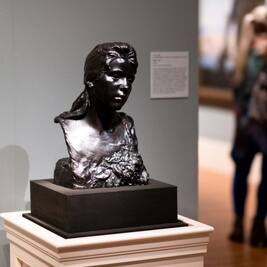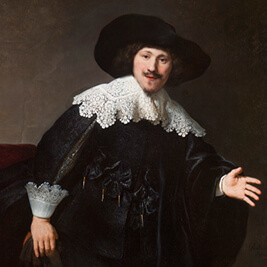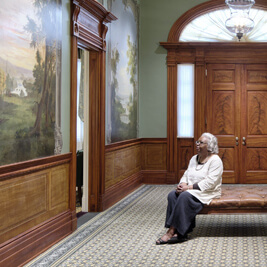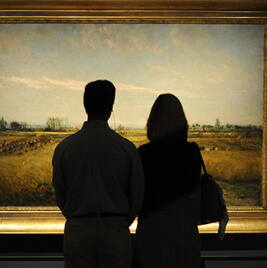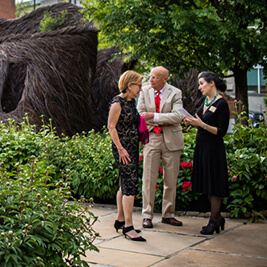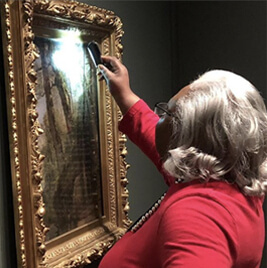- Do + See
- Dine + Host
- Give + Join
- Educate + Learn
Balancing Wanderlust with Stay-at-Home:
Two Works by J.M.W. Turner
by Tamera Lenz Muente, Associate Curator
For nearly three months, the coronavirus pandemic has all but halted travel around the world. Many of us with a passion for travel—myself included—have been reminiscing over photographs of past vacations and daydreaming about our next trip. Will it be a weekend getaway to Hocking Hills or Kentucky’s Bourbon Trail? A quick jaunt to lie on the beach in South Carolina? A long drive west with the family to see the Grand Canyon or the Rocky Mountains? A trip to Europe to visit great museums? Whether you love to travel near or far, this is a dreary time for those of us with wanderlust. There’s nothing like exploring somewhere new to recharge, relax, or get inspired.
The English landscape painter J. M. W. Turner (1775–1851) found endless inspiration in his travels. On his journeys throughout the United Kingdom and Europe, Turner filled hundreds of sketchbooks with tens of thousands of drawings and watercolor sketches. Back in his studio, he used this material—along with his memory and imagination—to create detailed oil paintings and watercolors. The Taft Museum of Art has brilliant examples of both in its collection.
Painter and Angler
In the summer of 1808, Turner undertook a commission by Sir John Leicester to paint views of Tabley House, Leicester’s country home in Cheshire, about 200 miles northwest of London. Turner did produce two major oil paintings of the estate; however, a friend and fellow artist also visiting Tabley reported that Turner spent much of his time “occupied in fishing rather than painting.” Indeed, from Tabley Turner traveled to North Wales on a fishing trip, as evidenced in letters, in his sketchbooks, and in his painting The Trout Stream in the Taft collection.
Fishing offered Turner time to relax, to reflect, and to immerse himself in nature. While angling on a tranquil river Turner could literally connect—mind and body—to the landscape. While wading in a stream and casting flies, he could observe the way sunlight filtered through clouds or sparkled on moving water. Turner’s The Trout Stream shows the quiet delights of men fishing, enveloped by a dramatic landscape.
A Sea of Ice
During the same period Turner painted The Trout Stream, he completed Valley of Chamouni, one of ten watercolors by the artist in the Taft collection. In 1802, on his first trip to the European continent, Turner journeyed to the Alps, where he sketched the Mer de Glace (Sea of Ice), a glacier near Chamonix, France, in the shadow of Mont Blanc, the highest peak in Europe. Just as The Trout Stream features a dramatic storm approaching above a peak, this watercolor depicts the power of weather, glacier, and mountain overwhelming goats and shepherds who appear tiny in the monumental scene.
While wealthy art patrons sometimes hosted Turner at grand country houses, the artist’s travels frequently involved rugged sojourns. He once told a friend that on journeys to remote locations like the Alps he “underwent much fatigue from walking and often experienced bad living and lodgings.” Enduring such conditions was necessary as Turner attempted to capture the “sublime”—the quality of nature that is simultaneously beautiful and fearsome
Working in an era before photography, Turner sketched what he saw. Drawing allowed him not only to see, but also to experience and understand a particular place at a particular moment. Back in his studio, Turner referred to his sketches to recreate landscapes in oil or watercolor, embellishing them from his imagination and imbuing them with emotion from his memory. For this reason, his “stay-at-home” periods between travels were as important as his journeys. They provided Turner with time for reflection and creation before he ventured out again to gather more experiences in his sketchbooks. Fellow travelers, let’s spend this period close to home as Turner would have—reflecting, creating, dreaming, and planning our next adventures.

